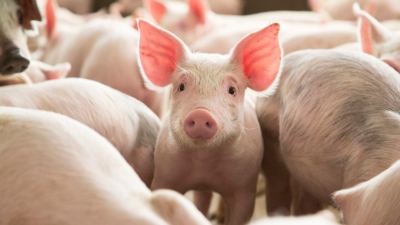Growing from the gut: The impact of the pig’s microbiome

The diversity of a pig’s microbiome, or their gut’s “ecosystem”, varies along the different regions of the gastrointestinal tract, with some regions having less tolerable conditions and containing reduced microbial diversity in comparison to regions that are more favorable to microbial growth.
The challenges of modern production practices can restrict the diversity of the gastrointestinal microflora, in some instances resulting in an unhealthy imbalance, which can lead to the development of a vicious cycle of pathogen colonization and recolonization.
Producers must utilize nutritional strategies, with additional improvements in hygiene and husbandry to address the issue of antibiotic use in animal production.
During a webinar held in conjunction with Pig Progress, Dr. Richard Murphy, research director at Alltech’s European Bioscience Centre in Dunboyne, Ireland, discussed the nutritional rehabilitation and repair of the intestinal microflora in pig production.
“Gut health and its management is an intricate and complex area governed by numerous factors, including nutrition, microbiology, immunology and physiology,” said Murphy. “When gastrointestinal health is compromised, nutrient digestion and absorption are affected, feed conversion becomes reduced and susceptibility to disease is heightened, ultimately resulting in a negative economic impact.”
Diversify and repair the pig microbiome for strengthened immunity
Murphy highlighted that the diversity of the microbiome plays a critical role in gut health, with beneficial microbes forming a protective barrier lining the gut that prevents the growth of pathogenic bacteria such as Salmonella, Campylobacter, Clostridia and Escherichia, amongst others.
Microbial diversity: The key to gut health
Murphy discussed four ways to rehabilitate the intestinal microbiota:
- Normalize gut microflora: Enhance microbial diversity
- Shift the balance: Reduce pathogen load
- Break the cycle: Decrease antimicrobial resistance
- Feed the recovery: Enhance nutrient digestibility
One way to address microbial repair is to use a feed supplement that focuses on diversifying and stabilizing the gut microflora. Mannan-rich fractions (MRFs) isolated from the yeast cell wall as a functional ingredient are currently being used for microbial control.
“The effects of MRF supplementation on health and performance have been studied comprehensively, and they have proven effective at improving weight gain and feed conversion efficiencies while also protecting against pathogen colonization of the gut,” stated Murphy.
Optimal pig performance begins in the gut
By making changes in the overall microbial diversity within the gut, we can aim to repair and rehabilitate gut microflora, thereby reducing pathogen load, enhancing resistance to pathogen colonization and reducing the abundance of antibiotic-resistant strains.
Improving our understanding of how changes in the gastrointestinal tract’s bacterial composition contribute to host health and performance is critical.
Alltech’s Antibiotic Reduction Programme supports European producers as they transition their animals to minimize antibiotic usage while maintaining health and productivity. The programme includes preventive medicine, management and nutrition solutions to minimize antibiotic use on pig farms. If you would like more information on the Alltech Antibiotic Reduction Programme, please click here.
To watch Dr. Richard Murphy’s microflora webinar with Pig Progress, please click here.















